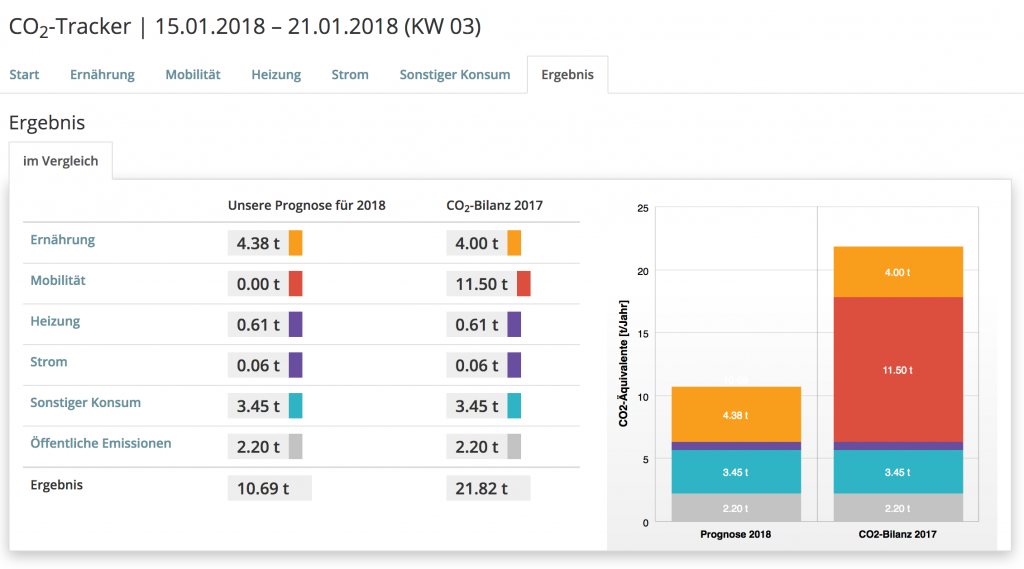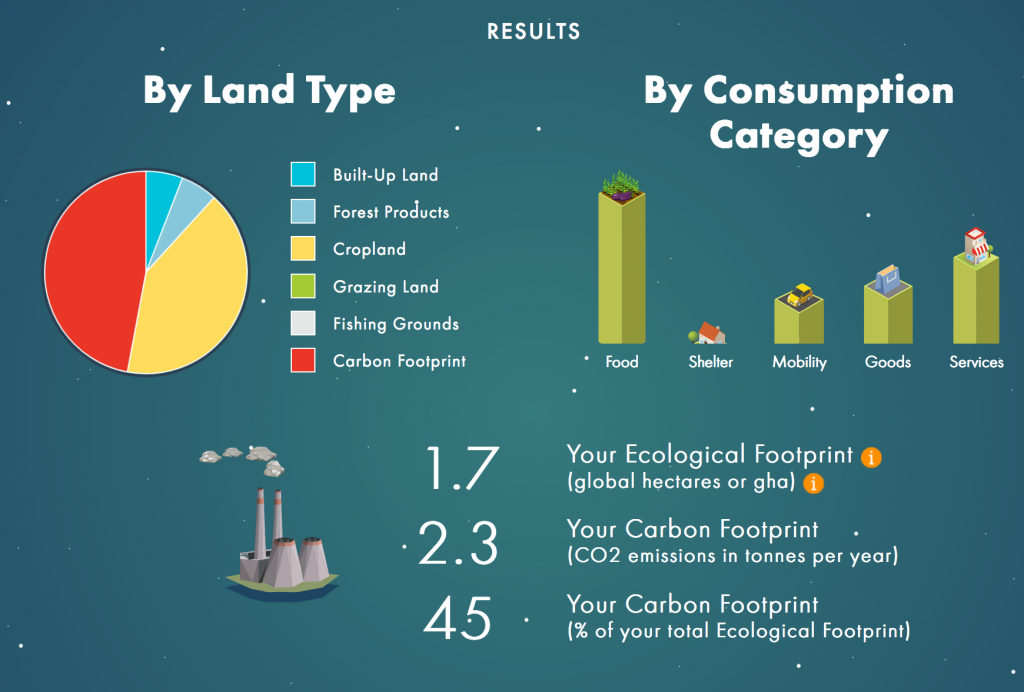The first episode of the podcast is up! In this episode, I introduce myself and what this podcast is about. But most importantly, I do my first weigh-in to figure out where I stand. I use three tools to analyze my environmental impact:
- The KliB calculator
- The Global Footprint Network’s ecological footprint calculator
- Nature Conservancy’s carbon calculator
You can listen to the full episode here:
The KliB calculator
Last year, I participated in KliB (Klimaneutral leben in Berlin, or living carbon-neutral in Berlin) a living lab organized by the Potsdam Institute for Climate Impact Research (PIK). The project asked 100 families to audit themselves at the end of 2017 and then spend a year tracking themselves weekly and committing to reduce their carbon emissions in five areas: food, transportation, home (i.e. heat and electricity), “other” consumption, and public emissions (i.e. our part of government emissions).
Our emissions (measured as the household I share with my husband and our son, who was born in the middle of 2017) were not bad. The biggest chunk of our carbon “weight” — responsible for half our total emissions — was a series of flights we took to the U.S. and within the U.S. in May of that year. Check it out.

Ecological footprint calculator
Second, I filled out the ecological footprint calculator offered by the Global Footprint Calculator. Here I also did better than expected, with my environmental impact calculated as a shocking 1 planet if everyone lived like me! To be honest, I don’t trust this calculator, because it claims my carbon emissions are a mere 2.3 tons per year. Further research is necessary…

Nature Conservancy’s carbon calculator
The final piece of my weigh-in was with the carbon calculator offered by the Nature Conservancy. This calculator is helpful if you live in the United States, because you can compare your emissions to others in your area. Not so helpful to me in Germany, but still. Our household footprint was only 13 tons of carbon, about 5 per person. Feels low.

Takeaways from the weigh-in
Overall, what these three calculators mean is I’m doing pretty well. Somewhere around 5 tons of carbon per year is nothing to sneeze at, and well below the German average (about 12 tons) and the U.S. average (about 20 tons). So I could say I’m on track to personally hit the IPCC’s recommended targets for both countries for 2030. For 2050, with a maximum 2 ton per person goal, not so much.
Still, this is heartwarming news. I have a pretty great life. I’m happy, do what I enjoy, and, yes, even engage in some climate sins (bacon, that means you). So this means that if others were to go on a climate diet, it wouldn’t be the end of the world. Get it? For me, though, the question is: what can I do to cut my emissions even lower? How hard will it be? I think it makes sense to start with food.
I hope to hear from you! Send me your thoughts: lisa [a] myclimatediet.org.